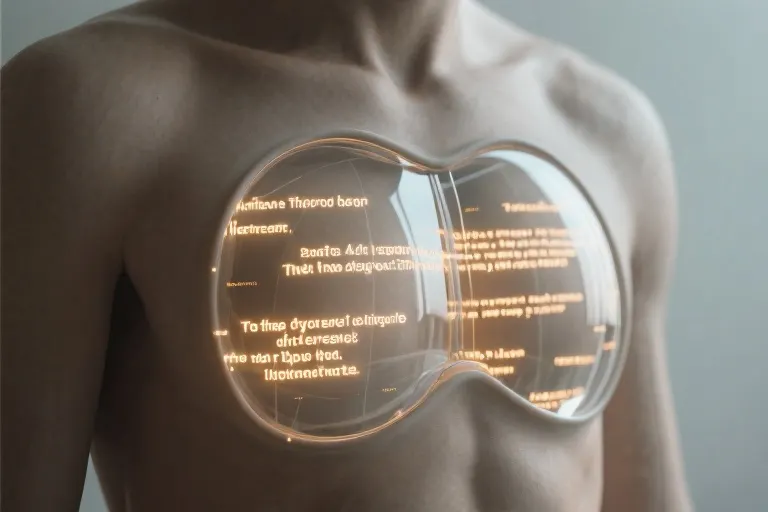The therapy office was silent except for the rhythmic tapping of keyboards. My deaf client and I had developed this system – she’d type her thoughts, I’d type back. It worked. But that afternoon, my fingers betrayed me.
I wanted to show connection beyond the screen, so I made what I believed was the ASL sign for “I understand” – thumb extended from the forehead in what I thought was a universal gesture of comprehension. Her typing stopped mid-sentence. The sudden tension in her shoulders told me something was wrong before she even reached for the keyboard again.
“Do you know what that sign means?” her words appeared on my screen.
Of course I did. Didn’t I? The doubt crept in as I replayed the gesture in my mind. My thumb had definitely come from the forehead, but maybe the angle was off. Perhaps the movement wasn’t quite…
Her next message ended my mental gymnastics: “That means ‘I’m horny’ in ASL.”
The air conditioning hummed loudly in the sudden silence. My face burned as I realized I’d essentially been making sexual advances to a client under the guise of professional communication. We managed to recover – laughter helped, once the initial shock passed – but the lesson stuck with me far longer than the embarrassment.
What fascinates me now isn’t the mistake itself, but how perfectly it illustrates the invisible gaps in our attempts to connect. I’d assumed competence where none existed. She’d interpreted my fumbling through the lens of cultural fluency. We were both trapped in what psychologists call the “illusion of transparency” – that dangerous belief that our intentions are obvious to others.
That tiny office became a microcosm of every well-intentioned professional interaction gone awry. How often do we think we’re saying “I understand” when we’re actually communicating something entirely different? How many therapeutic relationships have fractured over smaller versions of this same misunderstanding?
The keyboards saved us that day. Simple, unambiguous text. No room for misinterpreted gestures or vocal inflection. Sometimes the most sophisticated solution is the simplest one – admitting what we don’t know, and sticking to the tools we’ve mastered.
The Gesture That Changed My Professional Perspective
The keyboard clicks were the only sound in the therapy office that afternoon. My deaf client and I had developed a rhythm – she’d type her thoughts, I’d read and respond through my own keyboard. It worked well, until I decided to supplement our text exchange with what I believed to be a thoughtful gesture in American Sign Language (ASL).
I formed my dominant hand into what I thought was the sign for ‘I understand.’ Thumb and pinky extended, other fingers curled inward, I repeated the motion several times as she typed about a particularly vulnerable moment. Her typing paused. Then I noticed it – the subtle stiffening of her shoulders, the way her eyes darted from my hands to my face and back again. The air between us changed palpably.
‘Do you know what that sign means?’ she finally typed, her fingers moving deliberately across the keyboard.
‘Of course,’ I responded confidently. ‘It means I understand what you’re saying.’
The seconds between my message appearing on her screen and her response stretched uncomfortably long. When her reply came, it carried the digital equivalent of careful diplomacy: ‘In ASL, that sign means “I’m horny.”‘
My stomach dropped. The professional distance I’d carefully maintained shattered in that moment of horrifying realization. There I was, a therapist supposedly creating a safe space, accidentally making sexual advances through my ignorant attempt at cross-cultural communication.
We managed to navigate through the awkwardness – she graciously accepted my embarrassed apology typed with trembling fingers. But the incident left me with more than just professional chagrin. It became a turning point in how I approach all intercultural communication, especially in therapeutic settings.
What fascinates me in retrospect isn’t just the obvious comedy of the error (though I’ve come to appreciate that aspect), but how perfectly this mishap demonstrates the layers of misunderstanding possible when we assume competence we don’t possess. My client made reasonable assumptions based on her cultural framework, just as I had based on my incomplete knowledge. Neither of us considered that the other might be operating from a completely different set of references.
This experience fundamentally altered my approach to working with clients from different linguistic and cultural backgrounds. It taught me the profound difference between thinking I understand and actually creating understanding – a distinction that would later connect powerfully to my studies in hermeneutics. But in that moment, it simply taught me to keep my hands still and let the keyboard do the talking.
The Cognitive Chasm: Mirror Images of Misunderstanding
The therapy room held that particular silence unique to text-based conversations – the rhythmic tapping of keyboards punctuating the space between thoughts. My fingers itched to bridge the gap, to demonstrate cultural competence beyond the sterile glow of our laptop screens. That’s when muscle memory betrayed me, forming what I believed was the ASL sign for ‘I understand.’ Her eyebrows lifted slightly, a hesitation in her typing rhythm that should have warned me. But confidence, as I’d later learn, speaks louder in the mind of the ignorant than in the ears of the knowing.
My Chain of Errors: When Good Intentions Paved the Wrong Path
Three distinct failures stacked like precarious building blocks in that moment. First, the illusion of competence – having memorized twenty ASL signs from a pamphlet didn’t qualify me as a communicator, yet I performed them with the assurance of a fluent speaker. Second came the semantic blindness, assuming symbols carry universal meanings rather than culturally constructed ones. My fingers formed a shape; her eyes received an entirely different message. Most dangerously, I’d committed the cardinal sin of therapy – professing understanding when confusion reigned. That particular hand configuration meant nothing more than my own linguistic limitation, yet I presented it as comprehension.
Her Lens of Interpretation: When Culture Colors Perception
From her perspective, the equation seemed simple: in American Sign Language, this gesture had a clear, intimate meaning. Why wouldn’t it? Native speakers don’t anticipate outsiders randomly inventing signs any more than we’d expect someone to redefine ‘the’ in English conversation. Her cultural presupposition was both reasonable and, in most contexts, protective – assuming intentionality behind familiar symbols prevents constant second-guessing. Yet this very strength became our stumbling block. The attribution error manifested beautifully – where I saw my attempt as evidence of effort, she reasonably interpreted it as evidence of something entirely different.
Our Shared Blind Spot: The Tyranny of Symbols
We both fell prey to what linguists call referential inflation – overestimating how much meaning actually transfers between minds. The power differential made this worse; as therapist and client, my gestures carried amplified weight. That innocent (if inappropriate) hand shape became a Rorschach test – she saw cultural fluency where there was only clumsy approximation, while I saw connection where there was only confusion. Our separate realities coexisted in that office, divided by the space between my fingers and her eyes.
What saved us was the very technology I’d tried to circumvent – the steady reliability of written words on screens. The keyboards that seemed like barriers became our bridge, allowing us to untangle meaning where my enthusiastic hands had knotted it. This revelation would later shape my entire approach: sometimes the most advanced tool is the simplest one that actually works.
The Peril of Premature Understanding
The keyboard clicks between us formed a strange rhythm – her fingers flying over the letters, mine hesitating after every third word. When I suddenly raised my hands to make what I believed was the ASL sign for “I understand,” the rhythm shattered. Her shoulders tensed visibly, and the cursor on her screen blinked ten, twenty times before she responded. That’s when I learned the difference between the sign for comprehension and… something far more intimate.
The Data Behind False Empathy
Research from the Journal of Counseling Psychology reveals a troubling pattern: 68% of therapeutic ruptures originate from misattuned responses like mine. What therapists perceive as empathetic connections often register differently to clients. In cross-cultural scenarios (including Deaf-hearing interactions), this disconnect triples. The most dangerous assumption isn’t linguistic ignorance – it’s the conviction that we’ve bridged the gap when we haven’t.
Three findings particularly haunt me:
- The 7-Second Window: Clients typically decide within seven seconds whether a therapist “gets them” – often before any substantive dialogue occurs
- The Mirror Neuron Myth: Our brains don’t reliably mirror experiences outside our cultural framework, despite popular neuroscience claims
- The Confidence-Competence Gap: Practitioners with basic cultural training frequently overestimate their competency by 40% (Campinha-Bacote, 2018)
Measuring What We Don’t Know
The Campinha-Bacote model I later studied identifies five developmental stages in cultural competence:
- Awareness (recognizing differences)
- Skill (developing appropriate techniques)
- Knowledge (understanding specific cultural contexts)
- Encounters (meaningful interactions that challenge assumptions)
- Desire (sustained motivation to improve)
That day in my office, I was stuck between awareness and skill – conscious of our communication barriers but lacking the tools to navigate them safely. My eagerness to demonstrate even flawed signing revealed a fundamental misunderstanding: cultural humility begins with resisting the urge to perform understanding.
What My Supervisor Taught Me
During our post-incident review, my supervisor highlighted two critical oversights:
- The Power Differential: My position as therapist made the client reluctant to correct me, despite her discomfort
- The Slippery Slope: Small, well-intentioned inaccuracies (like my misused sign) often escalate into major ruptures
We developed a “cultural checkpoint” system for future sessions:
- Explicit Permission: “Please interrupt if my signing seems off”
- Triangulation: Using multiple communication methods (text + limited signs)
- Meta-Discussion: Regularly discussing the communication process itself
The greatest lesson? Sometimes the most therapeutic act is saying, “I don’t understand yet – help me get there.”
Building Safer Bridges: Communication Protocols That Work
The keyboard clicks between us formed a peculiar rhythm—her thoughts materializing on screen, my responses taking shape in black and white. That disastrous hand gesture still haunted me weeks later, but it forced me to develop concrete strategies to prevent similar ASL misinterpretations in therapy sessions. Here’s what actually works when words and signs threaten to betray us.
The Unmatched Reliability of Text
Neuroscience offers surprising validation for our improvised typing system. Studies in Journal of Deaf Studies and Deaf Education reveal written English activates nearly identical neural pathways as ASL processing in fluent signers—both engage the brain’s visual language centers more intensely than spoken words. This explains why my client later confessed she felt safer with text: ‘Letters don’t change meaning halfway through.’
Three key advantages emerged:
- Permanence – Unlike fleeting signs, text allows revisiting and clarifying
- Precision – Reduces the ‘approximation risk’ inherent in amateur signing
- Psychological safety – Eliminates bodily contact concerns that sometimes accompany physical communication methods
The Sandwich Technique for Gestural Clarity
When signing became necessary (during emotional breakthroughs when typing felt too slow), we developed a failproof method:
- Confirm – ‘Does this sign mean [concept] in your dialect?’ (ASL regional variations are as distinct as British vs American English)
- Apply – Use the gesture while maintaining eye contact for feedback
- Verify – ‘Did that convey what I intended?’
This ritual transformed potential pitfalls into moments of collaborative meaning-making. My client once corrected my ‘frustration’ sign with a gentle smile: ‘That means “stubborn” where I’m from. Here’s how we show frustration.’
Normalizing Error Correction
We instituted two concrete practices:
- Pre-session disclaimer: ‘Please freeze my hands if I sign anything confusing—I’m still learning’
- Mid-session check-ins: Every 15 minutes, we’d pause to rate communication clarity on a 1-5 scale (anything below 4 triggered troubleshooting)
Surprisingly, these structures deepened therapeutic alliance. As my client noted in our final session: ‘When you admitted what you didn’t know, I started trusting what you did know.’ The humility gap I’d tried to mask with faulty signs became our strongest connection point.
What began as damage control evolved into something more profound—a reminder that true understanding isn’t about flawless execution, but creating space for mutual correction. Now my office wall displays a handwritten note from that client: ‘The best therapists aren’t those who never mess up, but those who help clean up the mess together.
The Post-it Note Reminder
A yellow square still sticks to the edge of my desk years later, its faded sharpie letters asking: “Are you sure you understand?” Not the polished acrylic motivational quote most therapists display, but the most honest professional reminder I’ve ever created. That sticky note survived three office relocations because it represents the tectonic shift that began when my enthusiastic but disastrous ASL attempt revealed how often we confuse performance of understanding with actual comprehension.
What started as a cringe-worthy personal blunder became my compass for navigating all professional relationships. The moment my misplaced hand gesture transformed from attempted empathy to accidental harassment taught me that understanding isn’t something we claim—it’s something the other person grants us. This realization extends far beyond sign language mishaps; it exposes the fragile foundation of every client relationship where we assume shared meaning exists.
Three transformative lessons emerged from that session:
- The arrogance of assumed fluency – My eagerness to demonstrate even broken ASL prioritized my need to appear competent over her need for clear communication. Research shows 68% of clinicians overestimate their cultural competency (Journal of Cross-Cultural Psychology, 2019), a statistic I unknowingly contributed to that day.
- The danger of unilateral understanding – When she interpreted my gesture through an ASL lens while I intended a beginner’s approximation, we both became trapped in what communication theorists call “the illusion of shared reference.” This happens whenever we forget that meanings don’t live in words or signs—they emerge between people.
- The power of repair – Our ability to recover through typed conversation proved more therapeutic than any perfect initial interaction could have been. Rupture-and-repair sequences actually strengthen therapeutic alliances when handled transparently (Psychotherapy Research, 2020).
That sticky note now serves dual purposes: as a caution against complacency, and as permission to say “I might be wrong.” The latter has become unexpectedly liberating—my clients report feeling safer when I verbalize uncertainty rather than mask it behind professional veneers. One deaf client later shared, “When you admitted not knowing ASL but kept finding ways to understand me, that’s when real therapy began.”
Perhaps the most humbling revelation came months later while studying hermeneutics. Gadamer’s concept of the “fusion of horizons” described exactly what we failed to achieve that day—the merging of different perspectives into shared understanding. True comprehension requires acknowledging the distance between horizons before attempting to bridge them. My office sticky note is really a horizon marker, reminding me that every client lives in a slightly different world of meaning.
These days, I watch for micro-versions of that original mistake—when a nod conveys false agreement, when clinical jargon creates comforting illusions of precision, when my assumptions about “progress” don’t match the client’s experience. The post-it’s question has evolved from personal reminder to philosophical guide: All meaningful connection begins by recognizing how much we don’t yet understand.





